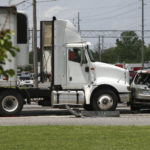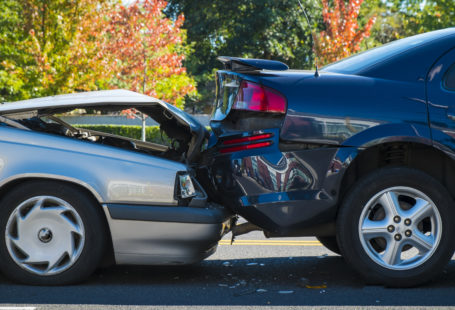Move over, self-driving cars, and make room for self-driving big rigs. A technology company has started testing its self-driving software on “heavy duty” trucks in California. If successful, you could be sharing California’s already dangerous roads with driverless rigs in the not-so-distant future.
According to the company behind the software, self-driving software in semi-trucks makes the most sense. Trucks generally drive on freeways while following (mostly) straight routes. Compared with downtown driving, which can require multiple turns and stops, trucks may theoretically be better candidates for self-driving software.
The American Trucking Association reports that trucking is one of the most dangerous jobs in the country. Each year, truck accidents result in the deaths of more than 4,000 people and injure another 116,000. While self-driving software may reduce the deaths and injuries caused to truck drivers (since there will essentially be no drivers to harm), it will be interesting to see if the switch significantly reduces the number of big rig truck accidents. If trucks are still involved in the same number of accidents, it is probably unlikely that the rate of injuries for passenger vehicle occupants will decline.
Truck Accidents on the Rise in California
In 2009, an estimated 4.8% of California traffic accidents involved a truck. After hitting this near all-time low, the rate of accidents involving trucks in California has risen steadily. In 2014, nearly 5.6% of all traffic accidents in California involved a truck. The timing of the rise in the number of truck accidents is no coincidence.
As the economy continues to recover, more trucks are required as businesses begin to gain economic traction. Tens of thousands of trucks hit Southern California freeways, often logging more than a combined 8 million miles each day. As more trucks hit the road, more accidents will occur. It is unlikely that self-driving trucks will reduce the number of trucks on Southern California roads. If the number of trucks is still significant, and if trucks continue to travel millions of miles each day, will drivers be any less likely to be injured in a truck accident?
Will Self-Driving Trucks Reduce Injury-Causing Accidents in California?
What are the current causes of truck accidents in California? Commonly cited causes of truck accidents include:
- Cars and trucks fighting over lane position at freeway interchanges;
- Lane changes;
- Cars having poor visibility over and around larger trucks;
- Driving between trucks;
- Speeding;
- Distracted driving; and
- Driver fatigue.
Will self-driving trucks remove or reduce the potential for these causes? Removing the human element of a truck driver could potentially remove the possibility for distracted driving, fatigued driving, and speeding by truck drivers. However, trucks will still be sharing the road with passenger vehicles.
These cars will be driven by humans who are very capable of speeding, distracted driving, and pushing the limits of fatigue. Self-driving software does not remove the obstacles posed by the size of the trucks themselves. Passenger cars will likely still struggle with the ability to maneuver around trucks and to see other vehicles around the trucks.
While the number of truck driver error could potentially be reduced, it is not clear whether the number of accidents would decline. If passenger vehicles are involved in a truck accident – regardless of who is operating the truck – the consequences can be life-shattering.
Consequences of Truck Accidents in California
If you are involved in a truck accident in California you will likely face extraordinary costs as you recover. The average cost of a fatal car accident is approximately $1.4 Million. The average cost of a truck accident is approximately $7 Million. Truck collisions are also twice as likely to be fatal than other traffic accidents,” says Sherwin Arzani, a personal injury lawyer in Los Angeles who handles big rig accidents. Mr. Arzani further states, “Even if a truck accident isn’t fatal it can cause serious, life-changing injuries.” Some of the leading injuries resulting from a truck accident include:
- internal organ damage;
- internal bleeding;
- traumatic brain injury;
- spinal injuries;
- loss of limbs; and
- paralysis.
Liability After a Truck Accident in California
If self-driving trucks are dispatched onto California’s busy freeways victims of accidents involving those trucks may face a challenge when it comes to determining liability. As is stands, the truck driver, employer, and truck company could potentially be liable parties in a truck accident today.
Taking the driver out of the equation that may pose a problem. Employers and trucking companies could still be on the hook, as could manufacturers and the technology companies who create, install, and run the self-driving software. If a certain employee is responsible for updating the system, operating it while a truck is traveling, or monitoring the health of the system, he or she could also be a potentially responsible party.
As the number of parties who could be liable increases it could take longer to (a) determine liability and (b) recover compensation. If you are injured in a California truck accident you will probably be counting a settlement or award from the at-fault party sooner rather than later. If we take the driver out of the situation…it could become a finger-pointing game.
An Attorney Will Help You Recover Compensation You Need After a Truck Accident
Self-driving trucks are still in the testing phase and unlikely to hit the streets anytime in the very near future. It appears as though technology is heading in the “self-driving” direction, though, so it may be closer than we think. As for whether accidents will decrease or how liability will be established? Time will. Lawmakers may even pass legislation to help hold trucking and technology companies more accountable for their rigs.
If you or someone you know has been injured in a truck accident contact an attorney in your area. Trucks are still operated by human beings who are fully capable of committing errors and causing accidents.





